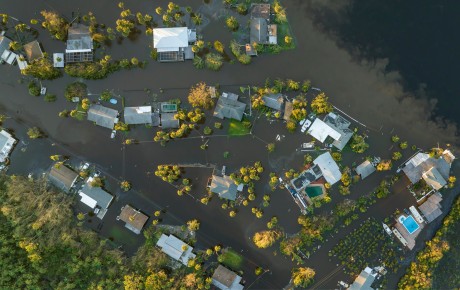
NFIP falls victim to government shutdown
Political uncertainty raises questions over federal flood insurance for millions of US homeowners.
After another period of uncertainty surrounding the National Flood Insurance Program (NFIP), President Trump signed a temporary six-month reauthorisation on 21 December 2018. Less than a week later, with the country in the throes of what would turn out to be the longest US government shutdown in history, the Federal Emergency Management Agency (FEMA) issued an order for the NFIP to stop processing new flood policies.
While the order proved temporary, it dealt a reputational blow to the government backed flood insurance scheme, which must also now deal with the impact of a new federal rule allowing mortgage lenders to accept flood insurance policies from the private market.
Closed for new business
The NFIP has been on a rolling programme of short-term reauthorisations since 2016 as Congress seeks to find a long-term solution to the scheme’s funding problems. While reauthorisations are generally secured in time to prevent lapses in cover, the latest US federal government shutdown added another layer of uncertainty. On 26 December, FEMA ruled that it was unable to sell new flood policies through the NFIP because the fees provided to insurers to process policies were "an impermissible funding obligation during a lapse of annual appropriations".
The National Association of Realtor claimed that up to 40,000 homes a month could go unsold, with buyers unable to complete on properties where the lender demands flood cover is in place.
The impact of that decision shocked the real estate market. The National Association of Realtors (NAR) claimed that, if the ruling was not lifted, up to 40,000 homes a month could go unsold, with buyers unable to complete on properties where the lender demands flood cover is in place (in 2012, 1,300 house sales a day were lost during a previous month-long shutdown). It’s not just issuing new policies either: under a shutdown the NFIP’s ability to renew existing policies can also be hit, which could leave many existing homeowners uninsured.
The National Association of Home Builders’ Chairman also said that, by refusing to renew or sell flood insurance policies as a result of the federal shutdown, “FEMA is not only thwarting Congressional intent, but also hurting countless homeowners across the nation who reside in flood-prone areas and rely on the NFIP to protect their properties against the risk of flooding.”
Reputational damage
While FEMA reversed its decision on 28 December, the suspension is likely to have shaken homeowners’ confidence in the NFIP, says Tom King, Flood Underwriter for Hiscox London Market. “The feedback we often get from US homeowners is why would they buy a product from an ‘alien’ insurer when there is a gold plated, government scheme in place in the NFIP? But if that gold plate becomes tarnished, homeowners might think twice.”
Under a shutdown the NFIP’s ability to renew existing policies can also be hit which could leave many existing homeowners uninsured.
New federal rule could release more demand
As well as concerns around the NFIP’s ability to withstand the uncertainty around government shutdowns and consecutive short-term authorisations, a new federal rule could also help level the playing field when it comes to residential flood cover. Due to come into effect on 1 July 2019, the rule will allow mortgage lenders to accept flood insurance policies from the private market as well as the NFIP. “Provided an insurance policy meets the statutory definition of private flood insurance, then lenders must accept private insurance as an alternative to the NFIP,” says King. “That could be significant for some of the biggest banks who, up to now, have been reluctant to accept private market policies.”
Provided an insurance policy meets the statutory definition of private flood insurance, then lenders must accept private insurance as an alternative to the NFIP.
Lowering this barrier will deliver a boost to private market products that offer better coverage than homeowners can get through the NFIP, King adds. “The NFIP product is restricted by a 30-day delay between quote and bind, lower limits, and narrower cover. We can quote and bind instantly, offer higher limits and provide other advantages like alternative living expenses after a claim, together with a commitment to return a home to the condition it was in before a flood.”
More carriers are offering private cover with wider limits - the private market is growing.
A further move by FEMA – known as Risk Rating 2.0 – which aims to reassess the flood risk for many properties by October 2020 and could see premiums rise under the NFIP, might also shift the dial on insurance take-up in the private market, says King. “It will mean that NFIP pricing will be closer aligned with the private market, making our pricing more competitive and boosting the number of homeowners who choose to look at alternatives to the NFIP.”
The future looks bright
Private insurers’ share of all residential flood policies purchased was only 3.5% to 4.5% in 2018, according to the Wharton Business School, but King is positive that figure will continue to grow. “The private market is growing. More carriers are offering private cover with wider limits. We still need to convince some market participants, but our performance over the past three storm seasons, together with the NFIP’s political difficulties and the change in the lending rule, can only help our position as a viable alternative for flood cover.”




